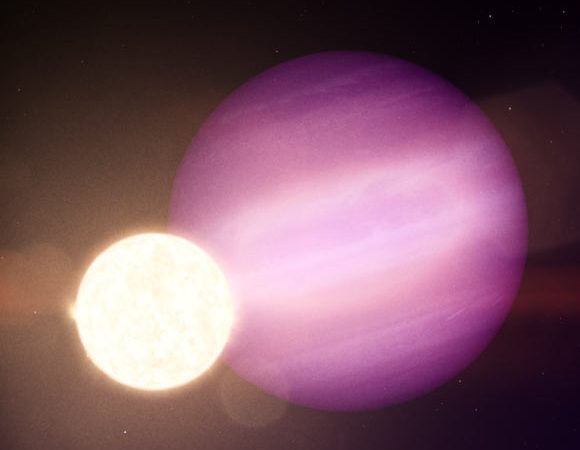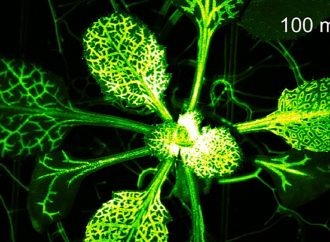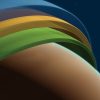Using NASA’s Transiting Exoplanet Survey Satellite (TESS) and several ground-based telescopes, astronomers have discovered a Jupiter-sized planet orbiting a nearby white dwarf star called WD 1856+534.
Source: Sci News
The WD 1856+534 system, also known as TIC 267574918 and LP 141-14, is located about 80 light-years away in the constellation of Draco.
The white dwarf is the remnant of a Sun-like star, greatly shrunken down to roughly the size of Earth, yet it retains half the Sun’s mass.
It is roughly 18,000 km (11,000 miles) across, at least 6 billion years old, and is a distant member of a triple star system.
The newfound massive planet is roughly the same size as Jupiter and is no more than 14 times as massive.
Named WD 1856+534b, it orbits the white dwarf once every 1.4 days, more than 60 times faster than Mercury orbits our Sun.
“We’ve never seen evidence before of a planet coming in so close to a white dwarf and surviving. It’s a pleasant surprise,” said lead author Dr. Andrew Vanderburg, an astronomer in the Department of Astronomy at the University of Wisconsin-Madison.
“We’ve known for a long time that after white dwarfs are born, distant small objects such as asteroids and comets can scatter inward towards these stars,” said co-author Dr. Siyi Xu, an assistant astronomer at the Gemini Observatory.
“They’re usually pulled apart by a white dwarf’s strong gravity and turn into a debris disk.”
The team suggests several scenarios that could have nudged WD 1856+534b onto its elliptical path around the white dwarf.
This trajectory would have become more circular over time as the star’s gravity stretched the object, creating enormous tides that dissipated its orbital energy.
“The most likely case involves several other Jupiter-size bodies close to WD 1856+534b’s original orbit,” said co-author Dr. Juliette Becker, a planetary scientist at Caltech.
“The gravitational influence of objects that big could easily allow for the instability you’d need to knock a planet inward. But at this point, we still have more theories than data points.”
Other possible scenarios involve the gradual gravitational tug of the two other stars in the system, red dwarfs G 229-20A and G 229-20B, over billions of years and a flyby from a rogue star perturbing the system.
The team thinks these and other explanations are less likely because they require finely tuned conditions to achieve the same effects as the potential giant companion planets.
“I think the most exciting part of this work is what it means for both habitability in general — can there be hospitable regions in these dead solar systems — and also our ability to find evidence of that habitability,” Dr. Vanderburg said.
The discovery is reported in a paper in the journal Nature.
Source: Sci News

































Leave a Comment
You must be logged in to post a comment.